Photo by Georgia Mulholland
Shid شيد (meaning lime) shares linguistic roots with the verb shayyada شَيَّدَ (meaning to construct firmly) capturing lime’s significance both as a binding agent and as a symbol of continuity. For centuries, lime bound stone walls, insulated wells, and surfaced floors, shaping the built environment of Palestine’s Central Mountains. Its durability is not immediate, it hardens over time through interaction with atmospheric carbon, eventually returning to limestone—its material origin—but in a renewed state, molded by human hands and bound to new surfaces.
Historically, lime kilns dotted the Central Mountains in their hundreds. By the late 1960s, however, these kilns had fallen into disuse. The rise of Portland cement, a fast-setting and mass-produced material emblematic of a neoliberal era, combined with the Israeli occupation’s restrictions on Palestinian access to land, ultimately ended local lime production.
In autumn 2024, during my residency at the Wonder Cabinet, I explored lime’s cyclical journey: sourced as limestone, transformed into quicklime with fire, slaked with water, and hardened with air to return to limestone. This process became a collective reflection on and negotiation with the land. Rather than reviving a lost practice, this project seeks to reconnect with the knowledge and relationships lime production embodied for centuries—ties that are continuously severed by colonial violence.
The project unfolds in three parts: Earth, tracing historical lime kilns; Fire, the collaborative construction and firing of a lime kiln; and Water & Air, exploring lime’s contemporary applications through collaborations with local farms and community centers.
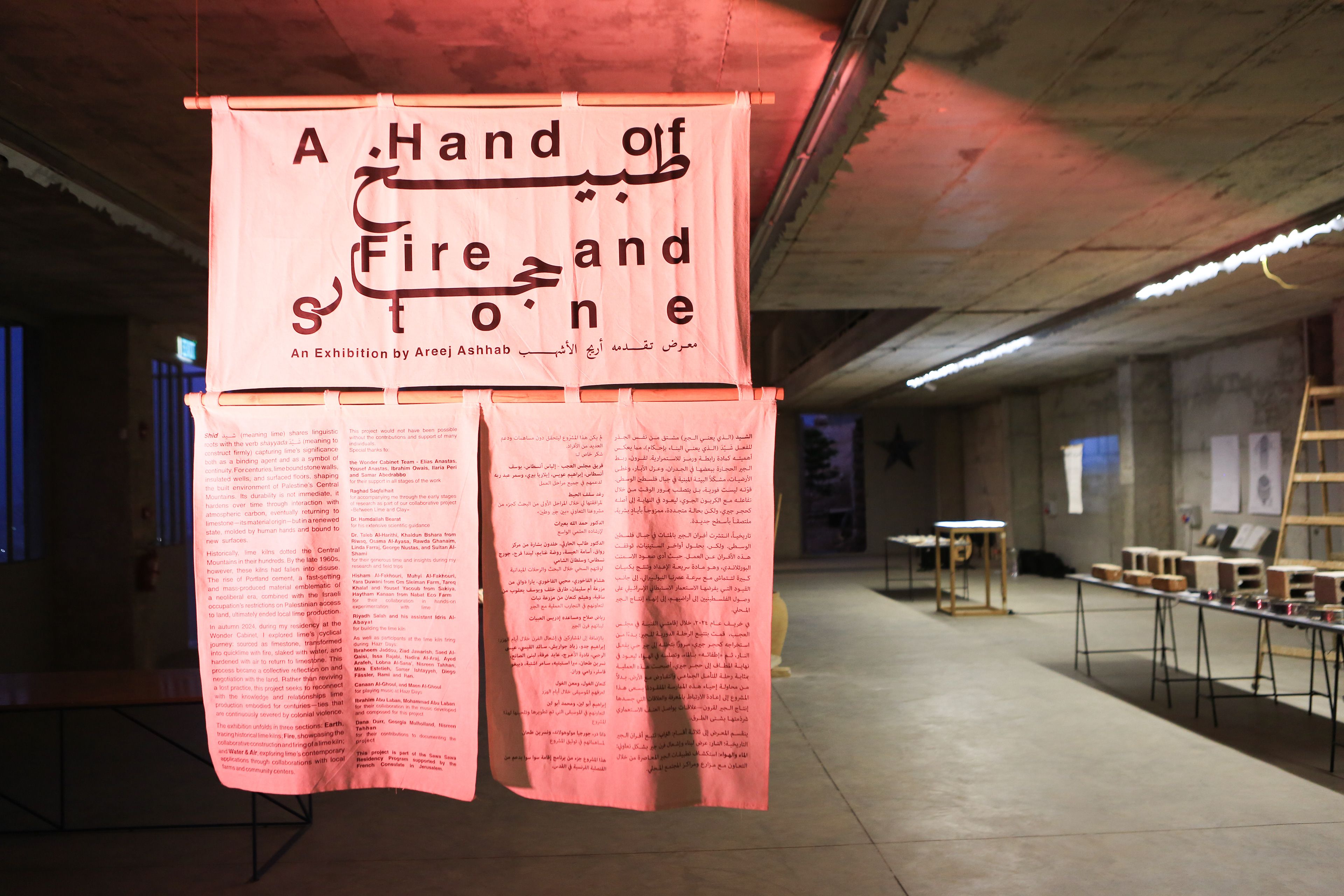
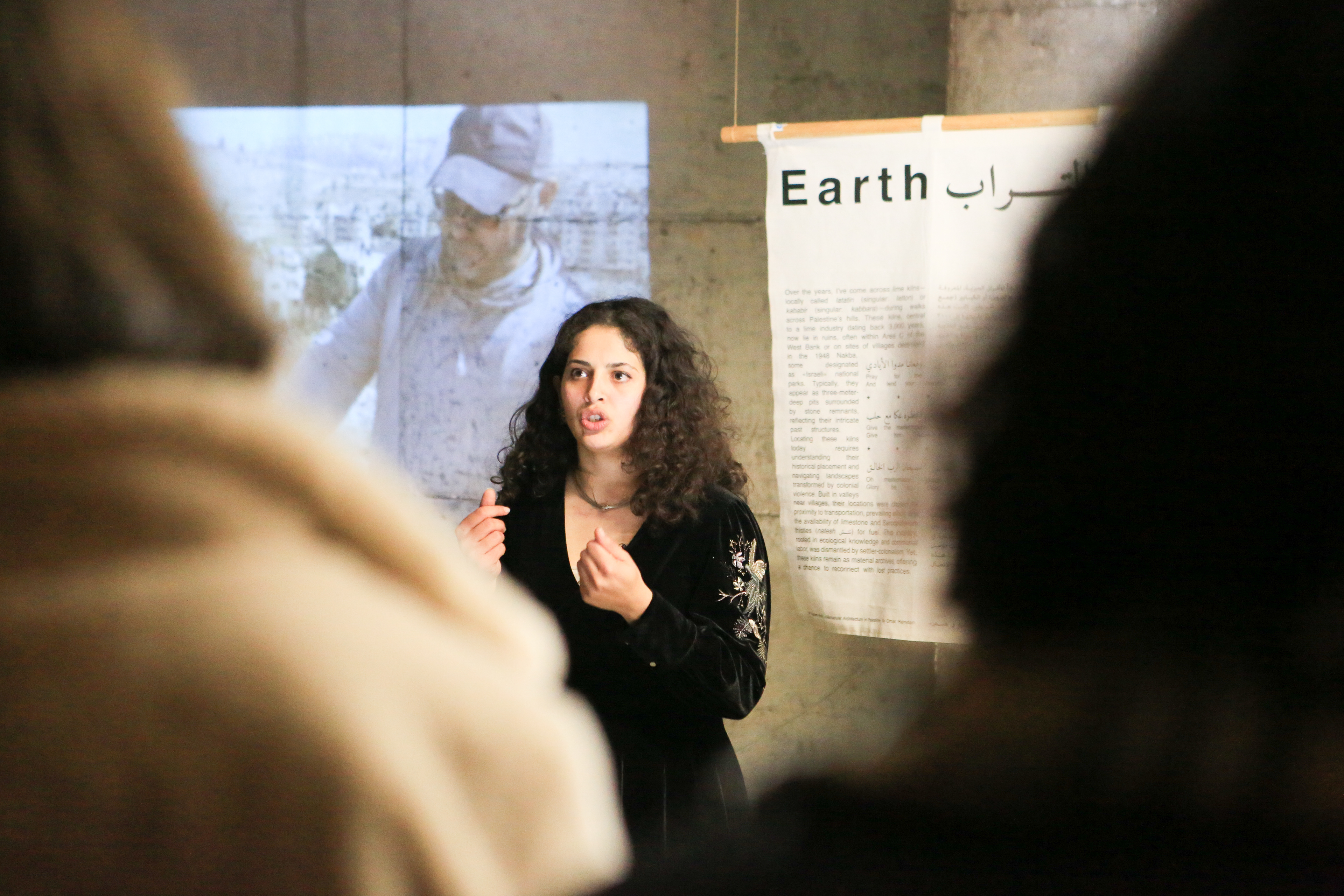
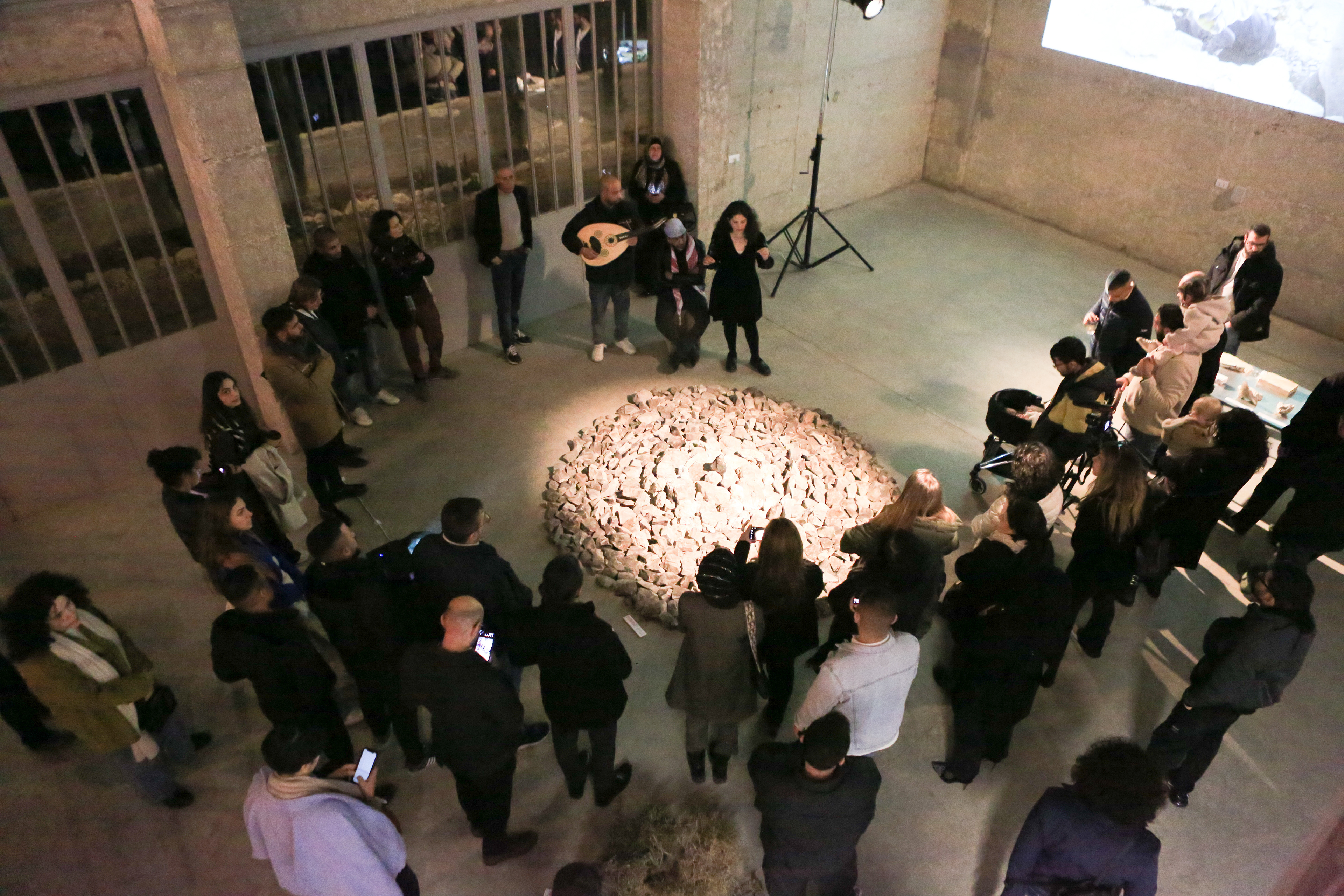
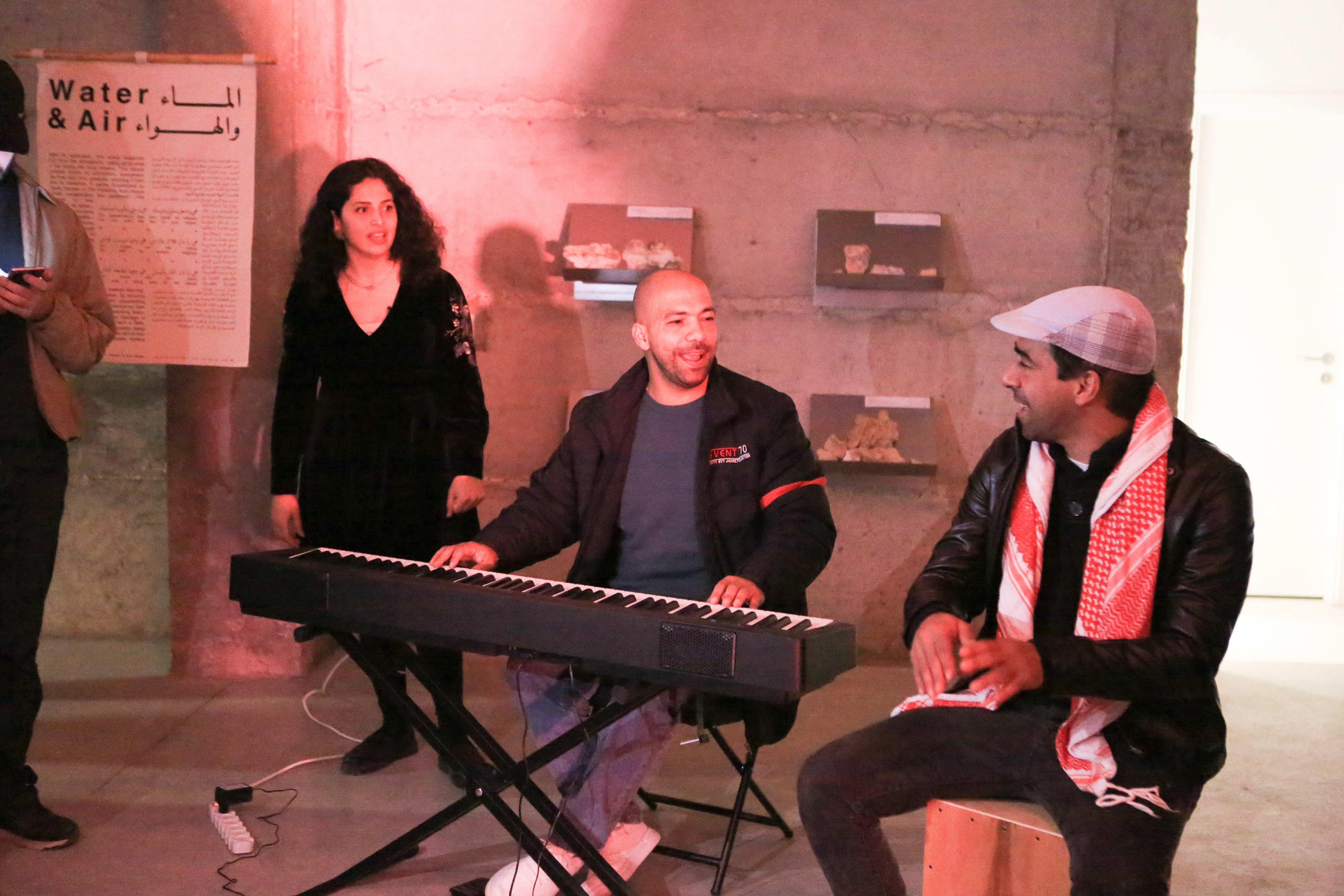
Verses from «Vernacular Architecture in Palestine» by Omar Hamdan
EARTH
Over the years, I’ve come across lime kilns—locally called latatin (singular: latton) or kababir (singular: kabbara)—during walks across Palestine’s hills. These kilns, central to a lime industry dating back 3,000 years, now lie in ruins, often within Area C of the West Bank or on sites of villages destroyed in the 1948 Nakba, some designated as «Israeli» national parks. Typically, they appear as three-meter-deep pits surrounded by stone remnants, reflecting their intricate past structures.
Locating these kilns today requires understanding their historical placement and navigating landscapes transformed by colonial violence. Built in valleys near villages, their locations were chosen for proximity to transportation, prevailing winds, and the availability of limestone and Sarcopoterium thistles (natesh نتش) for fuel. This industry, rooted in ecological knowledge and communal labor, was dismantled by settler-colonialism. Yet, these kilns remain as material archives, offering a chance to reconnect with lost practices.

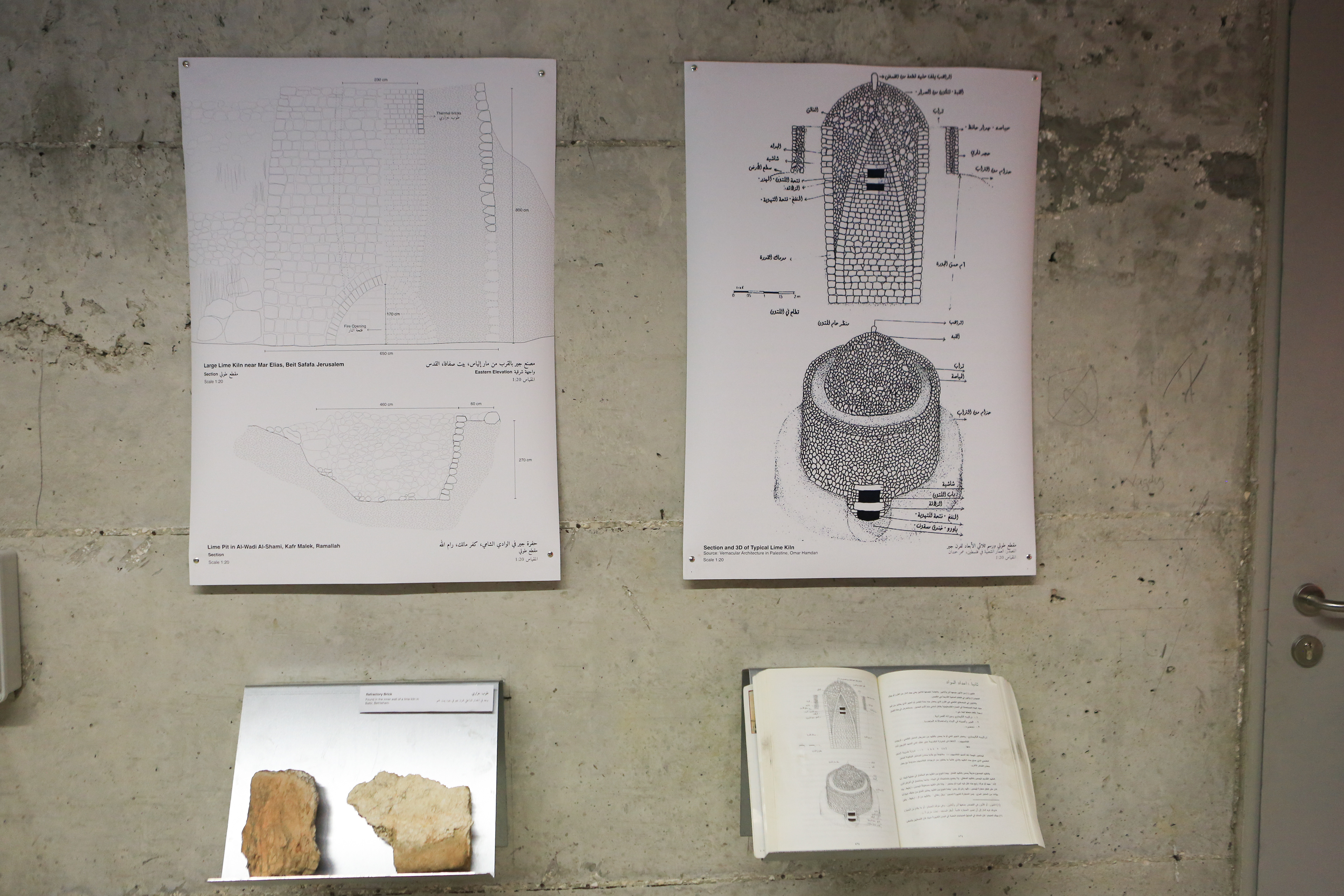
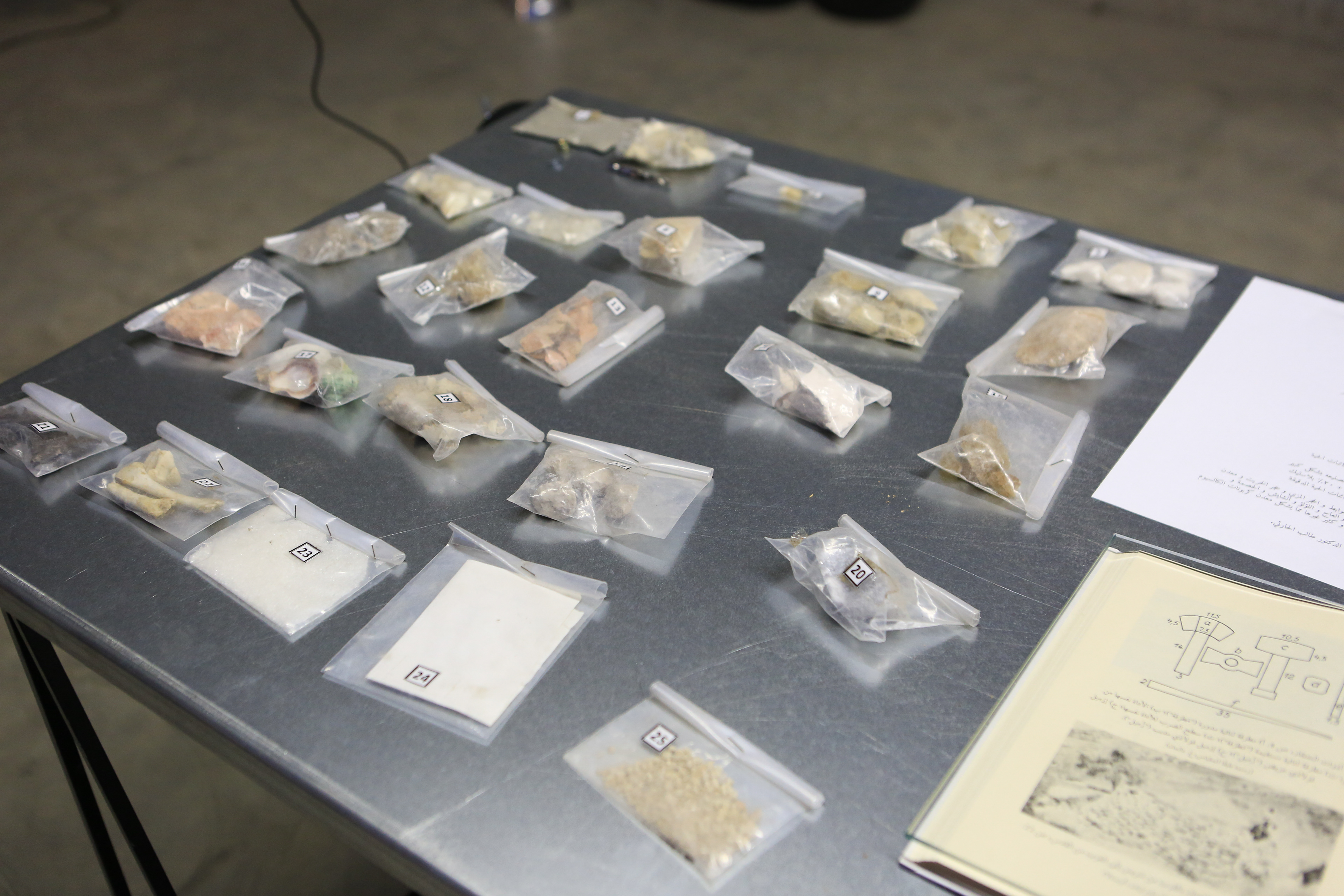

Verses from «Vernacular Architecture in Palestine» by Omar Hamdan
FIRE
Between 1000-800 °C, limestone (calcium carbonate CaCO3) decomposes, releasing CO2 and leaving behind quicklime (CaO). When mixed with water, it reacts with it, turning into lime (Ca(OH)2). Months before firing a lime kiln, men and women collected thousands of Sarcopoterium (natesh نتش) piles, thistles known for their high-temperature combustion, to ensure there was enough fuel to reach these high temperatures.
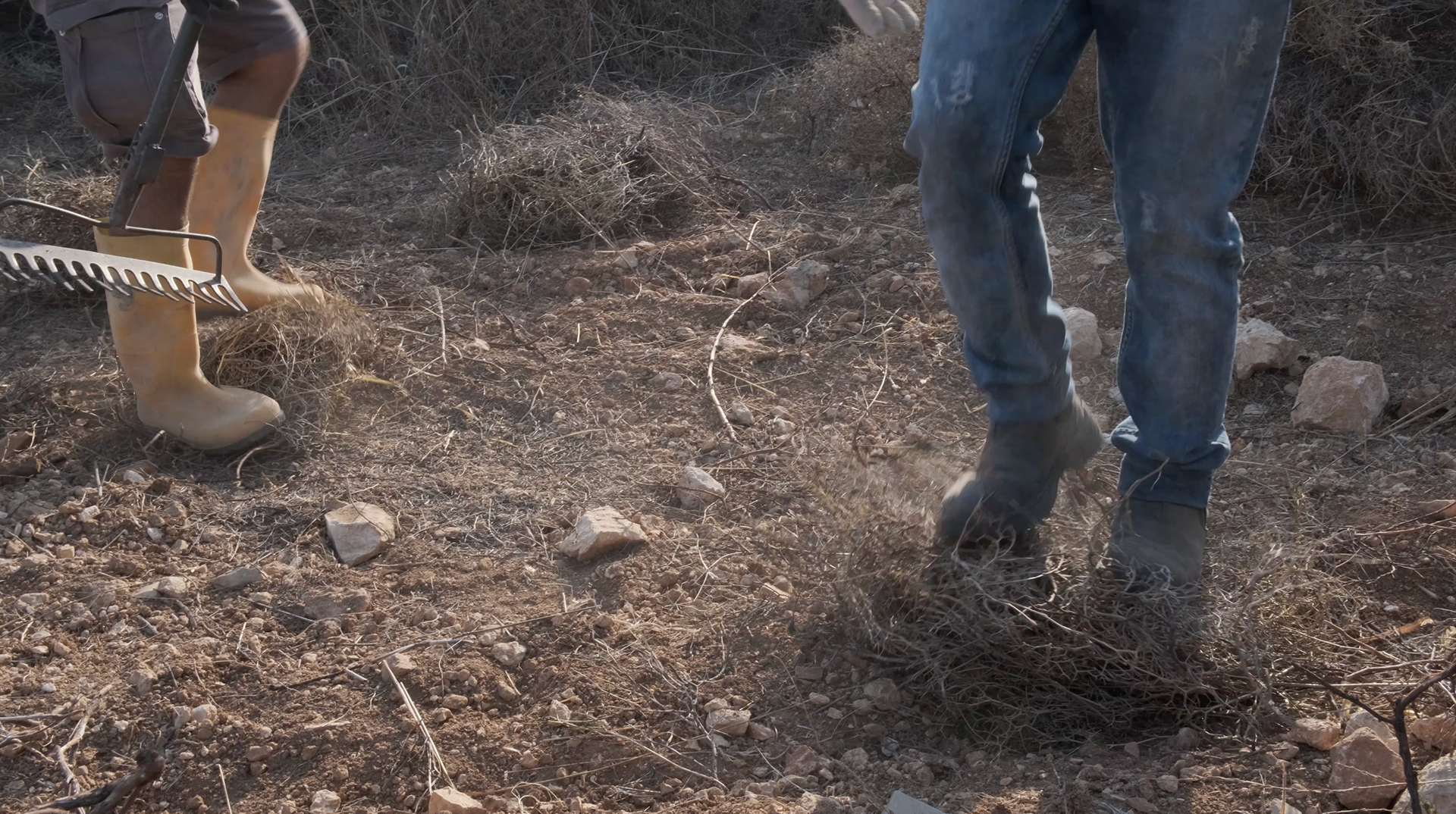
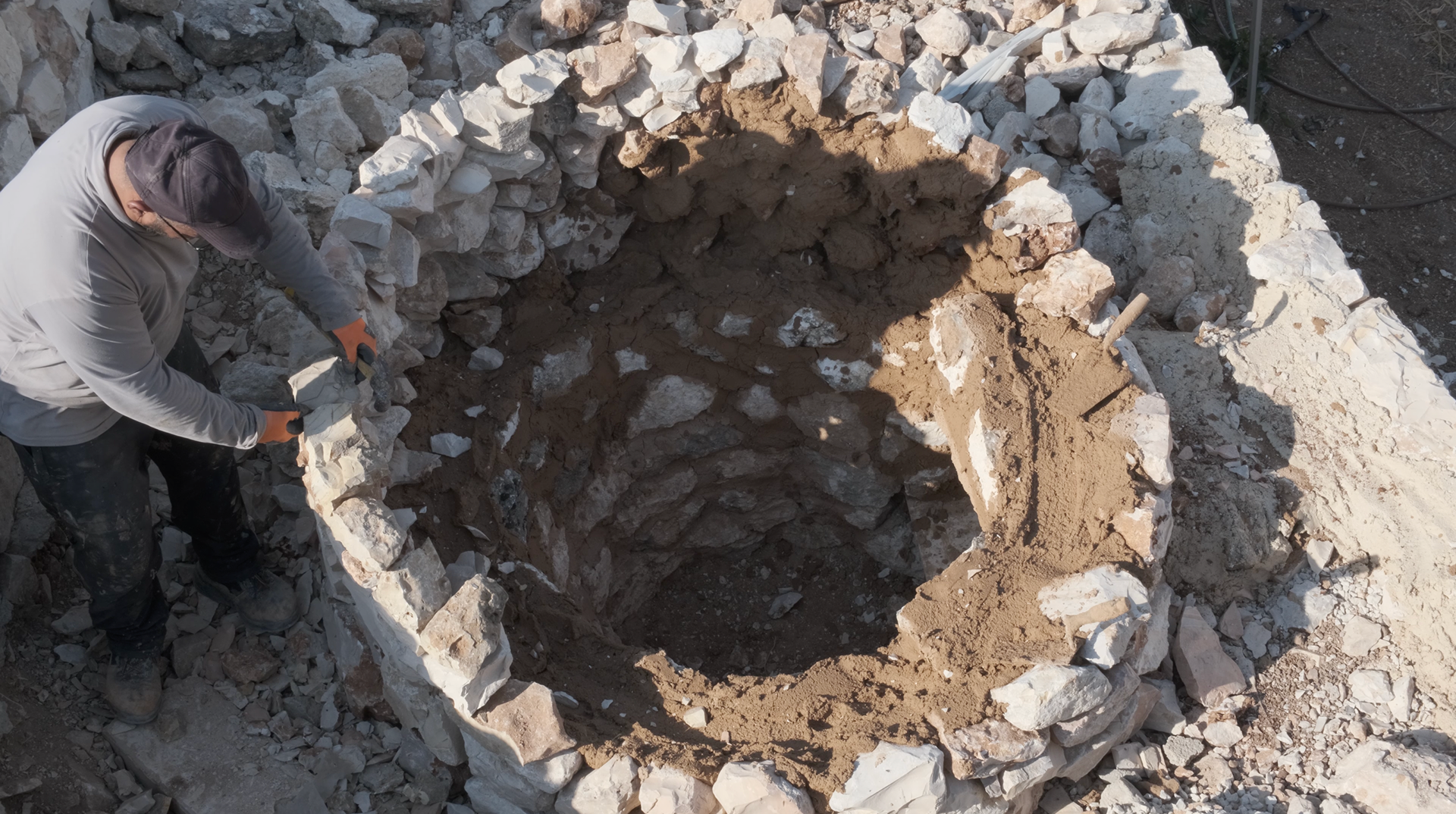
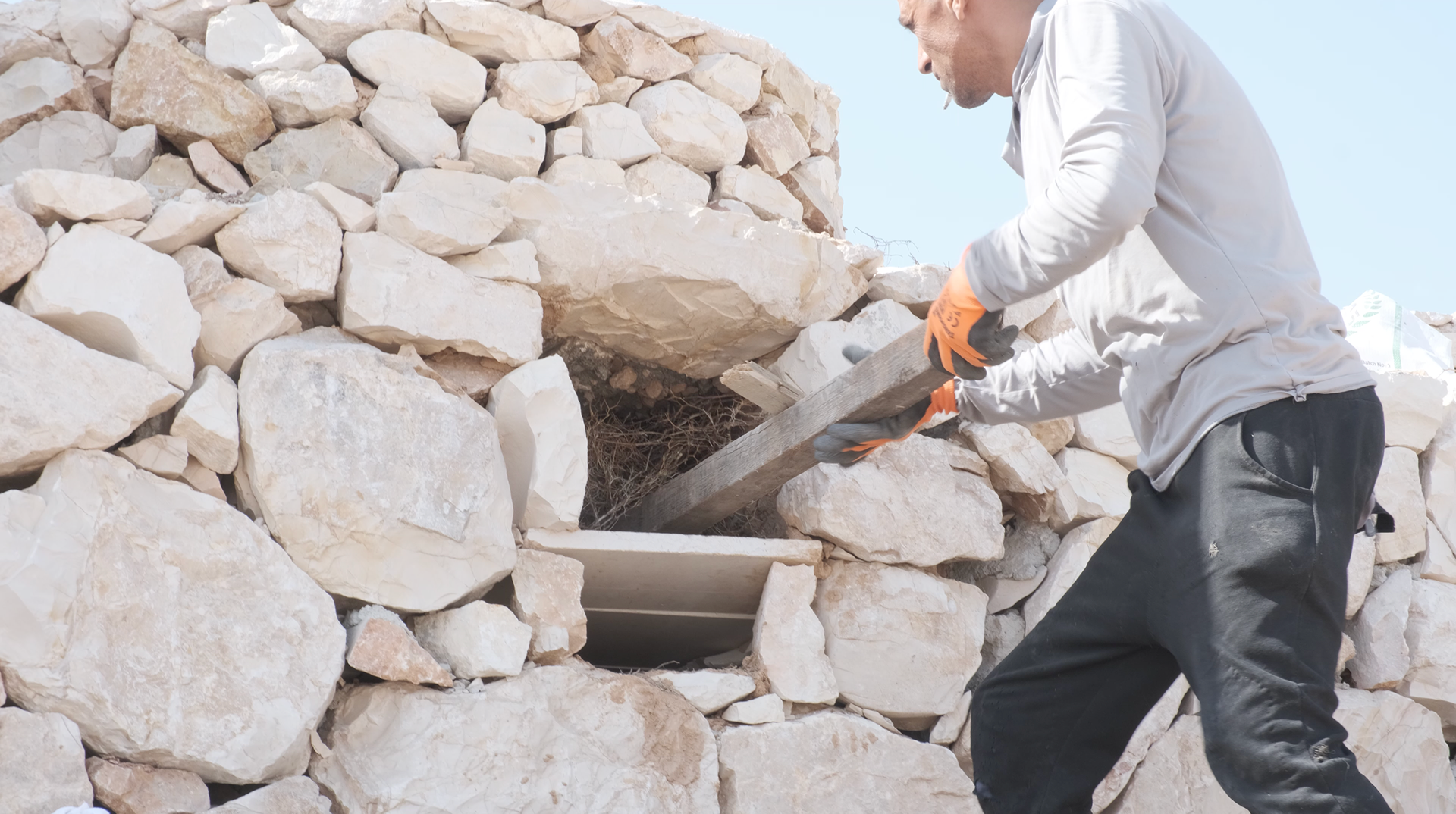
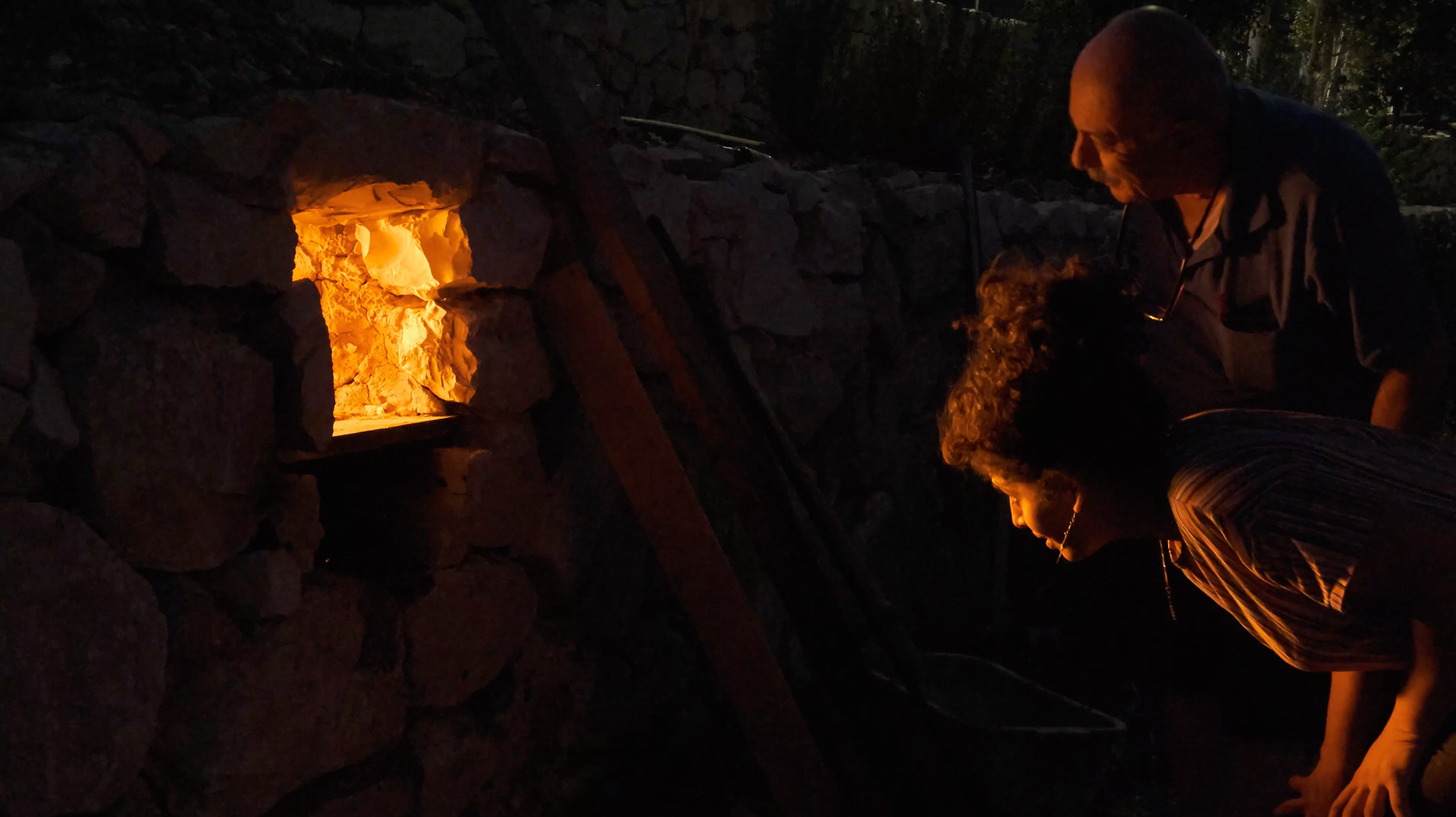
In October 2024, I built a traditional kiln with Riyadh Salah, a skilled stonemason from Dar Salah, Bethlehem. Historical accounts and guidance from material scientist Dr. Hamdallah Bearat informed my lime kiln experiment, the first exploration of this lost practice since the 1960s. Using porous nari stones for structure and hard mezze stones for burning, we prepared for a three-day firing. Part of Hazr Days, the event included food, songs, and a walk to an old kiln in Battir. Over 15 participants worked in shifts to sustain the flames, but the labor was grueling. When opening the kiln a week later, the stones were only partially decomposed—the outer layer was white, but the core remained stone. This was perhaps symbolic of the difficulty in delving into these practices today, leaving us only able to scratch at the surface.

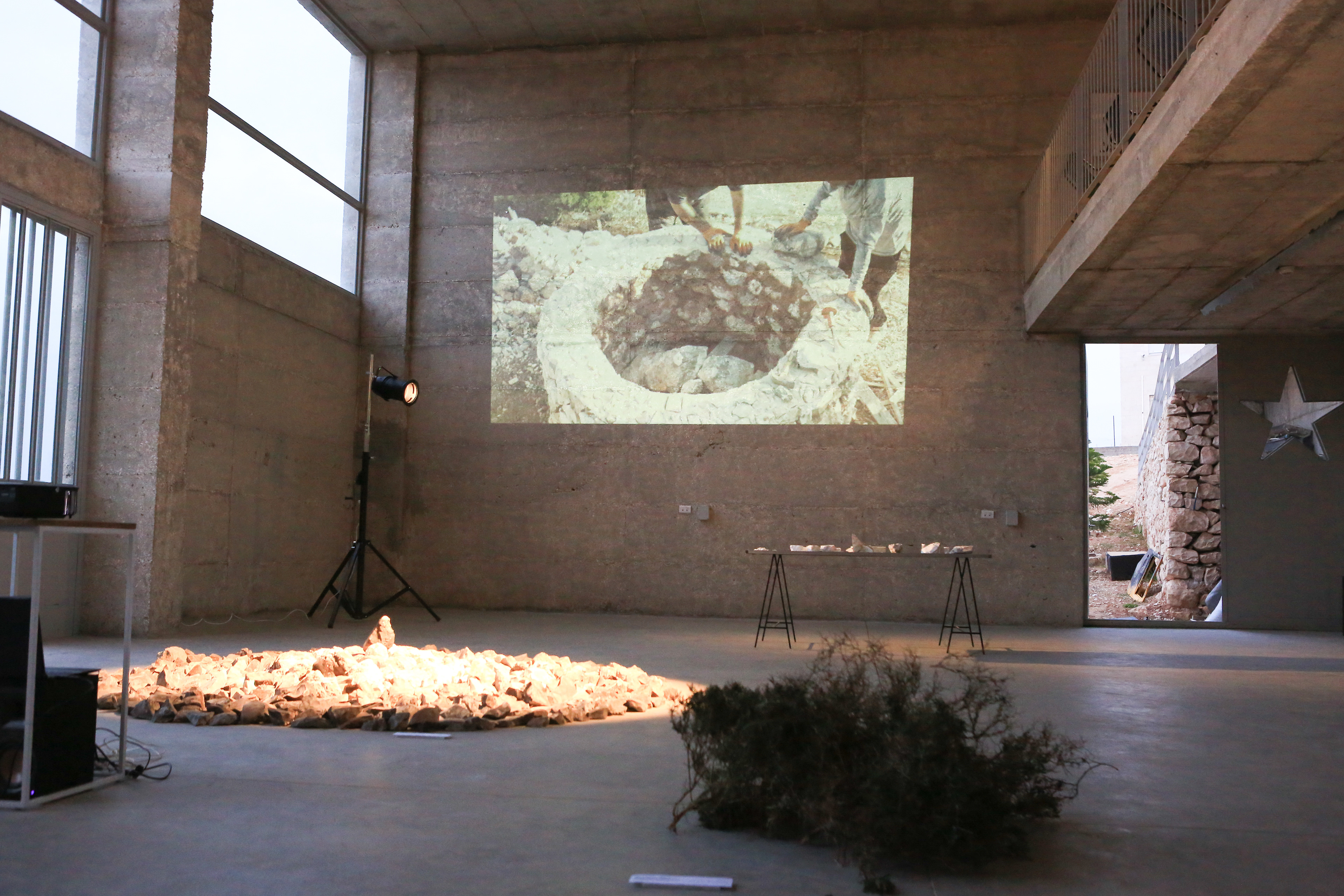
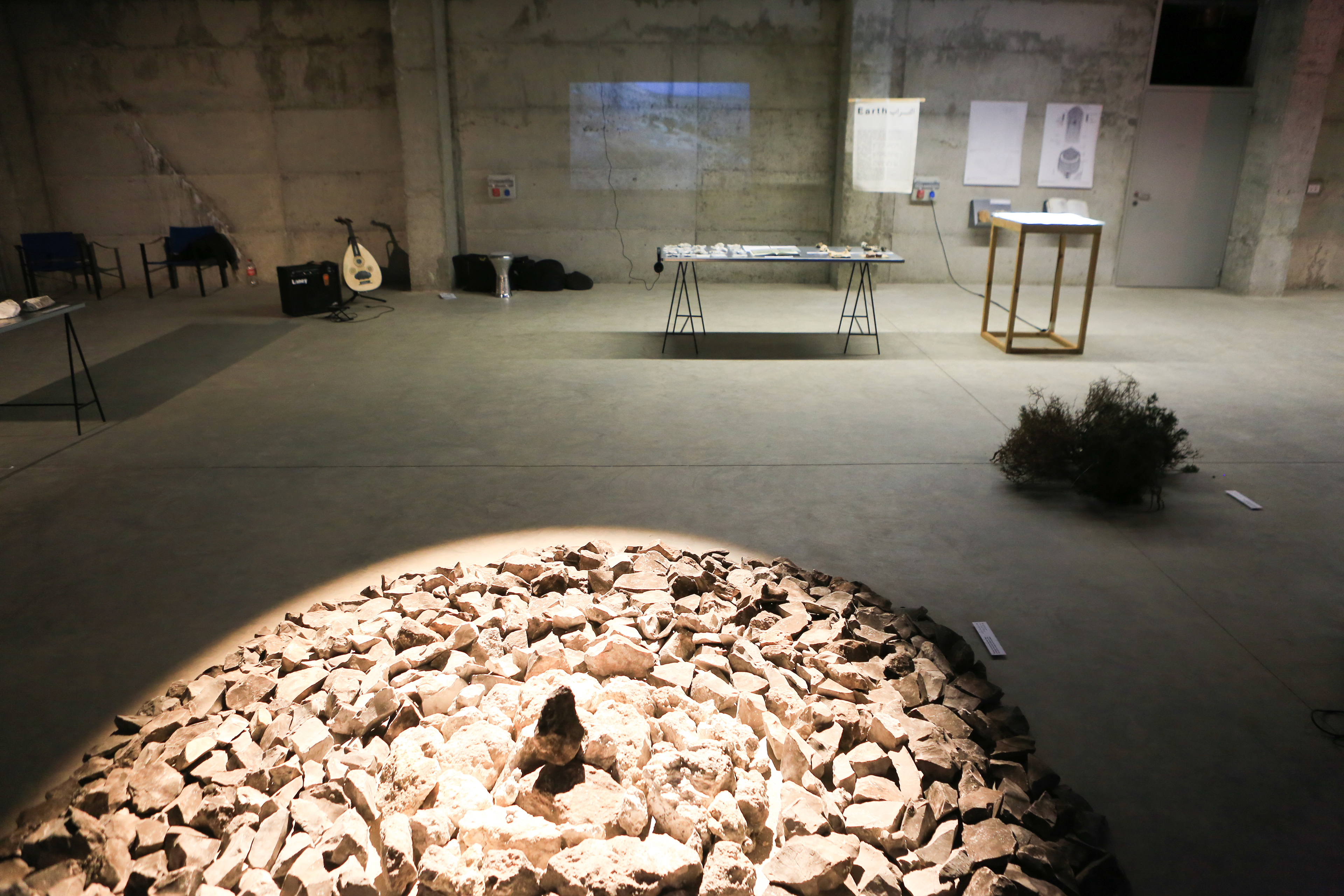
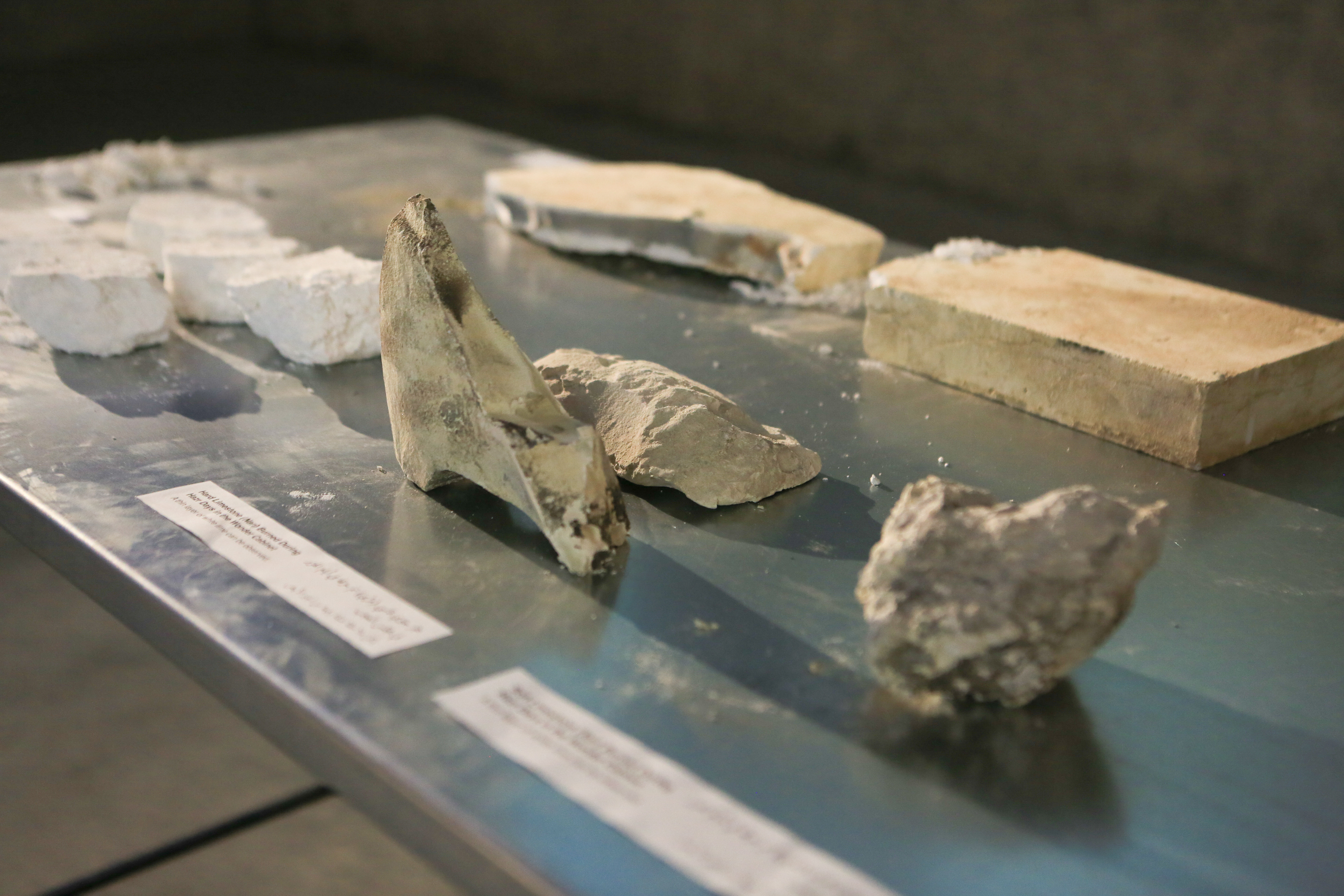
WATER & AIR
After its application, lime slowly reabsorbs CO₂ from the atmosphere, nearly all of what it lost during the firing process. This natural process, known as carbonation, strengthens the lime over time, gradually returning it from lime to limestone. A saying documented by Tawfiq Canaan in The Palestine Arab House (1933) encapsulates this sentiment: «The strength of lime returns to its father.»
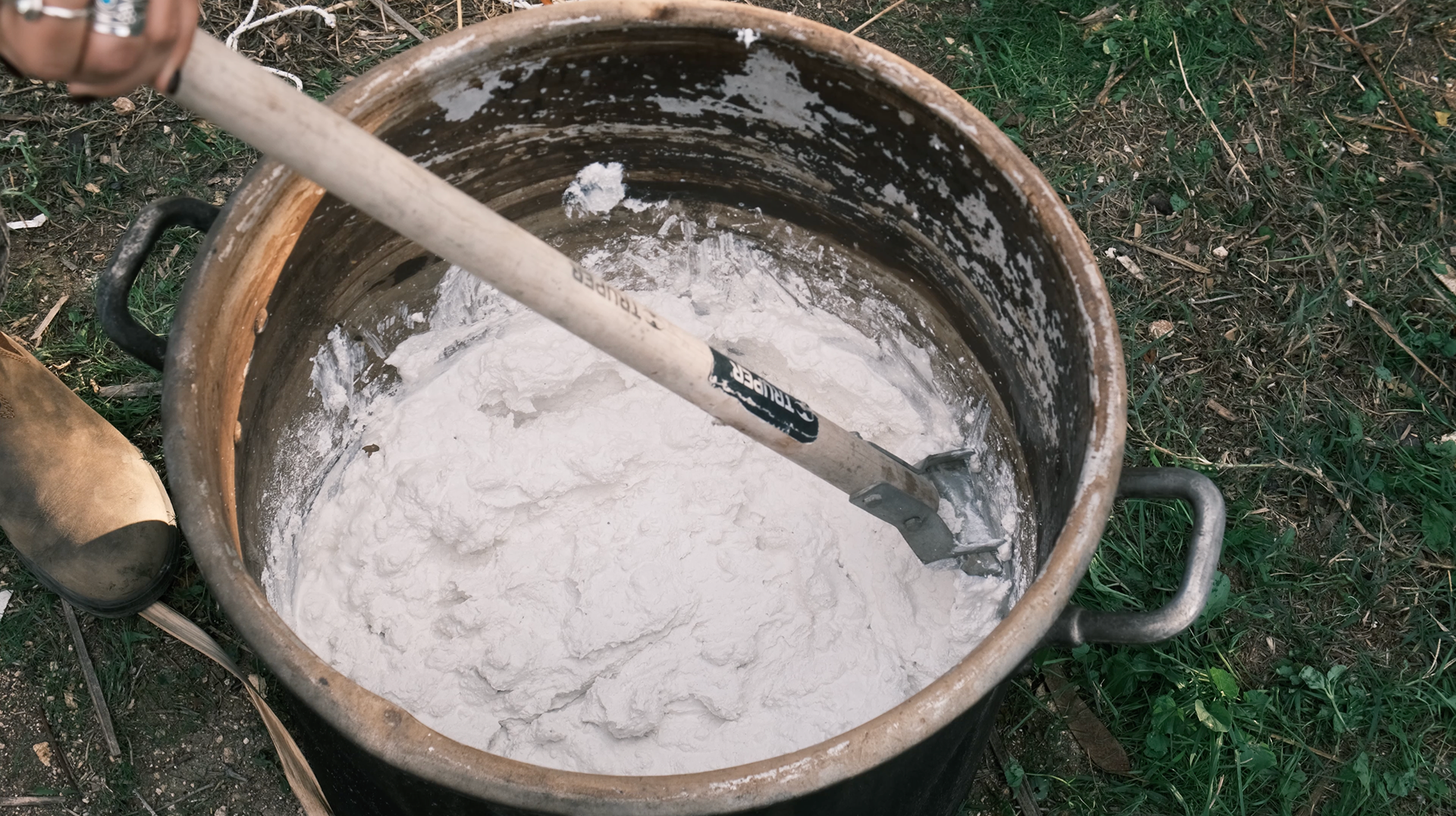
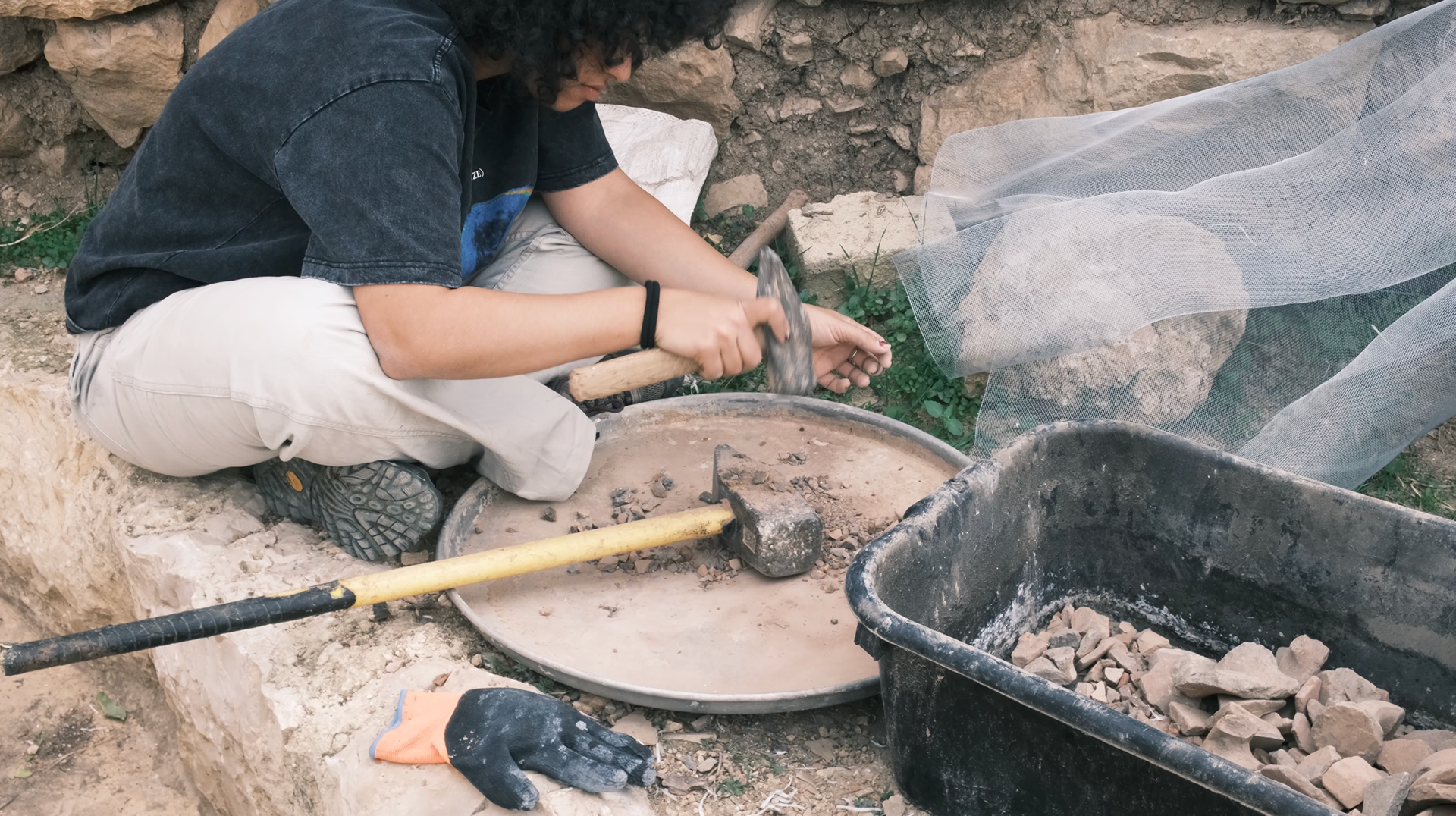
Verses from «Vernacular Architecture in Palestine» by Omar Hamdan
Lime also allows stone buildings to «breathe,» letting water particles enter and exit through the walls via its pores—something that Portland cement, hardening instantly, does not allow. As I processed and collected the results of the kiln firing, I revisited historical building techniques that incorporated lime, including maddeh (flooring), kuhl (filling), and qsarah (plaster). By sampling lime from old buildings and documenting historical mixes, I explored contemporary uses for this ancient material, incorporating fibers, ash, broken pottery, and cactus mucilage in collaboration with Om Sleiman Farm in Biliin, Sakiya Academy in Ein Qiniya, Ramallah, Nabat Eco Farm in Tamra, Haifa, and, as part of their ongoing research into sustainable building techniques.
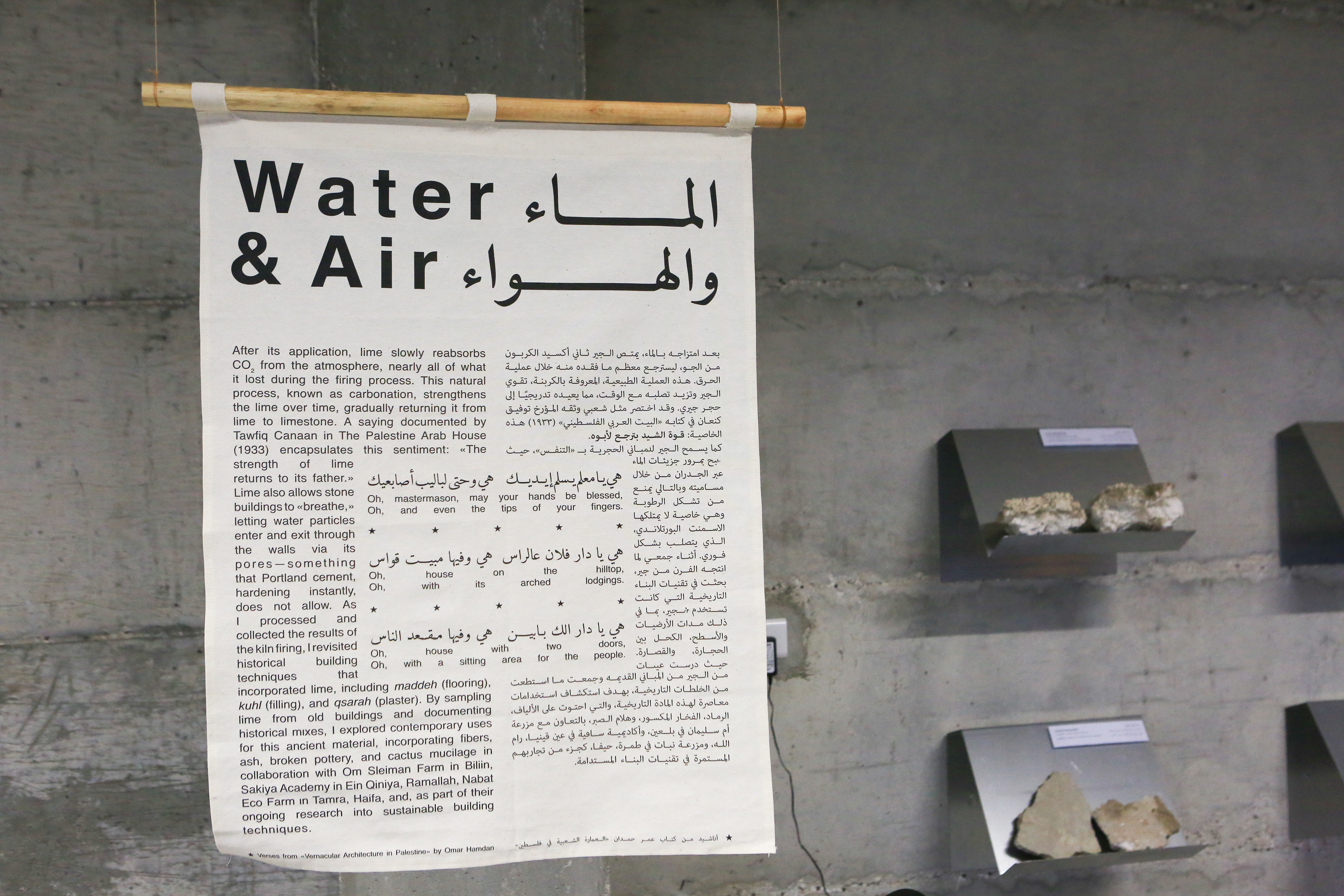

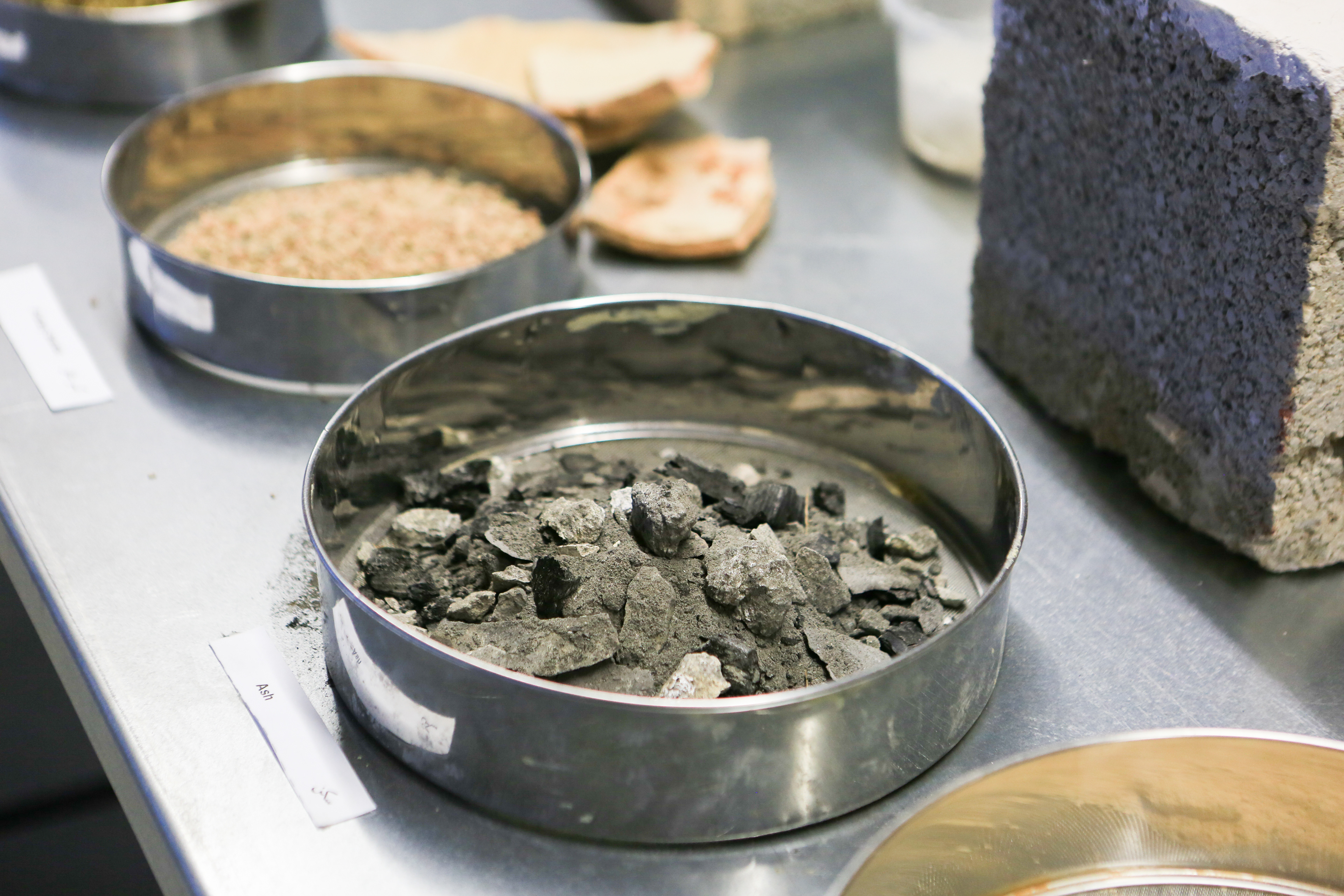
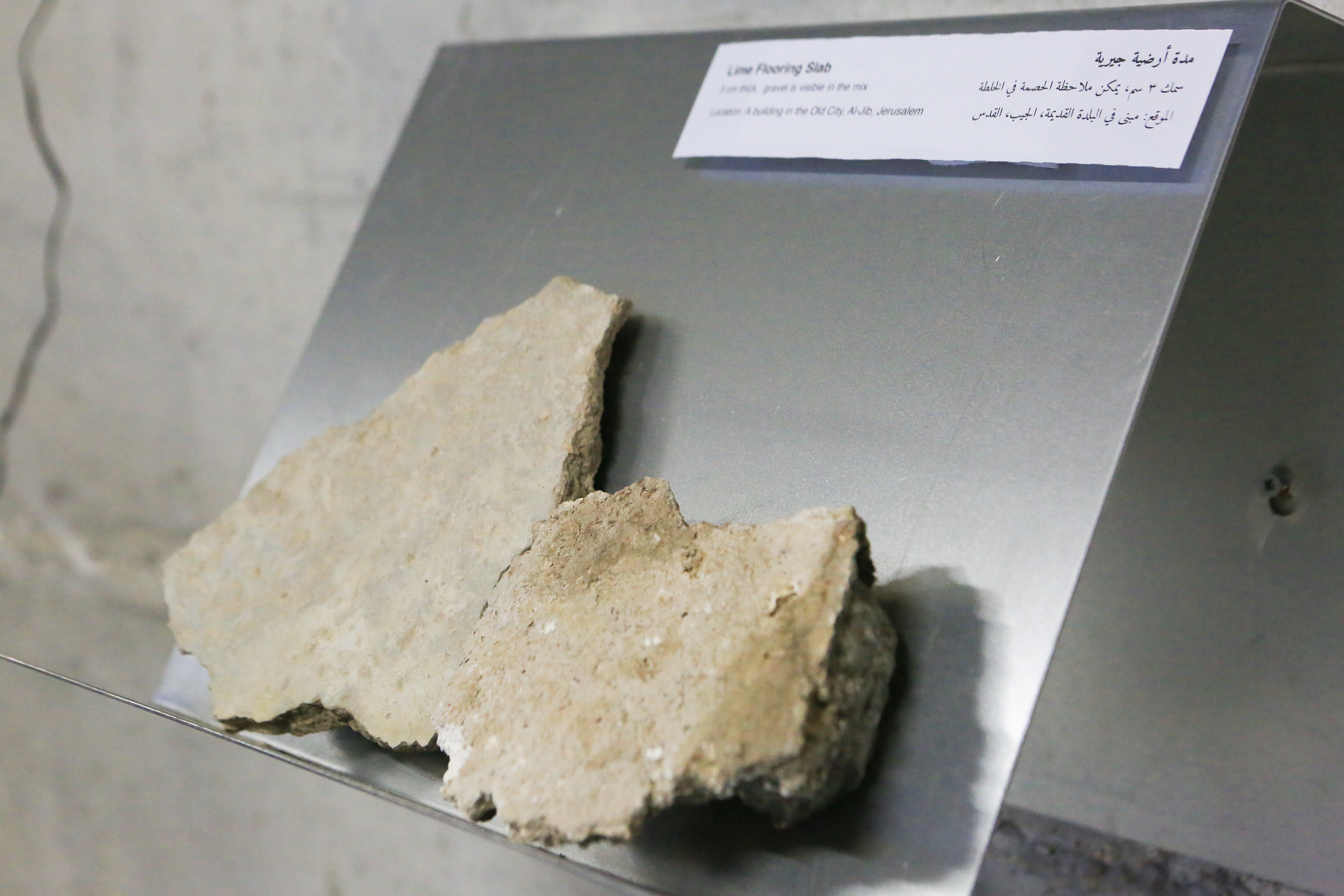
Exhibition photos by Sabrina Mukarker and Nisreen Tahhan
This project was part of the Sawa Sawa Residency Program at the Wonder Cabinet, Bethlehem, supported by the French Consulate in Jerusalem
